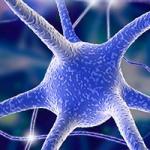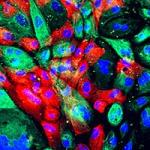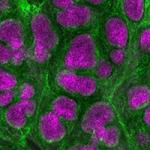
David Talmage, Ph.D.
Senior Scientist
Circuits, Synapses and Molecular Signaling Section
NINDS
Research Topics
Both stability and flexibility of neural circuits are required for proper brain development, learning, memory and behavior. Dynamic signaling between cells, at synapses and among circuits is the essential scaffold upon which brain function is built. Our research attempts to answer the broad question of how specific signal transduction events in axons contribute to the formation, function and maintenance of key synapses and circuits in general, and especially, of cholinergic circuits in the central nervous system (CNS).
Current efforts focus on two questions:
- How does Neuregulin 1 signaling contribute to the development of the nervous system, in general, and more specifically to forebrain cholinergic signaling? Altered Nrg1 signaling in the CNS leads to profound alterations in synaptic plasticity at glutamatergic synapses, loss of synaptic modulation by acetylcholine and behavioral deficits. A major ongoing effort has focused on dissecting how the different modes of Nrg1 signaling contribute to these diverse phenotypes.
- What is the functional significance of heterogeneity in the basal forebrain cholinergic system? Cholinergic signaling in the CNS is implicated in attention, learning and memory. Altered cholinergic activity is a well-documented component of neuropsychiatric and neurodegenerative disorders (e.g., schizophrenia, Post-traumatic Stress Disorder, Alzheimer’s disease, Parkinson’s disease). To gain a better understanding of how altered cholinergic signaling contributes to aspects of psychiatric disorders, we are pursuing studies aimed at gaining a deeper, mechanistic understanding of which populations of cholinergic neurons contribute to the formation and retrieval of specific memories, and what factors distinguish cholinergic neurons that are resilient to the insults of aging from those that succumb to these insults.
Biography
Dr. Talmage received his B.A. in Biology from the University of Virginia and his Ph.D. in Genetics from the University of Minnesota. After post-doctoral work at Rockefeller University and Harvard Medical School he joined the faculty at Columbia University and then at Stony Brook University. He joined the IRP at NIH in 2019 and moved to NINDS in 2021. His laboratory studies mechanisms of signaling within axons that contribute to synapsis formation and maintenance.
Selected Publications
- Rajebhosale P, Jiang L, Ressa HJ, Johnson KR, Desai NS, Jone A, Role LW, Talmage DA. Diversification of dentate gyrus granule cell subtypes is regulated by Nrg1 nuclear back-signaling. Life Sci Alliance. 2025;8(7).
- Rajebhosale P, Jone A, Johnson KR, Hofland R, Palarpalar C, Khan S, Role LW, Talmage DA. Neuregulin1 Nuclear Signaling Influences Adult Neurogenesis and Regulates a Schizophrenia Susceptibility Gene Network within the Mouse Dentate Gyrus. J Neurosci. 2024;44(43).
- Rajebhosale P, Ananth MR, Kim R, Crouse R, Jiang L, López-Hernández G, Zhong C, Arty C, Wang S, Jone A, Desai NS, Li Y, Picciotto MR, Role LW, Talmage DA. Functionally refined encoding of threat memory by distinct populations of basal forebrain cholinergic projection neurons. Elife. 2024;13.
- Kim R, Ananth MR, Desai NS, Role LW, Talmage DA. Distinct subpopulations of ventral pallidal cholinergic projection neurons encode valence of olfactory stimuli. Cell Rep. 2024;43(4):114009.
- Ananth MR, Rajebhosale P, Kim R, Talmage DA, Role LW. Basal forebrain cholinergic signalling: development, connectivity and roles in cognition. Nat Rev Neurosci. 2023;24(4):233-251.
Related Scientific Focus Areas


Molecular Biology and Biochemistry
View additional Principal Investigators in Molecular Biology and Biochemistry


This page was last updated on Wednesday, August 27, 2025